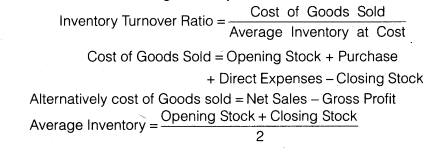A:
The solvency position of any firm is determined and measured with the help
of solvency ratios. In this way we can say that the ratios which throw light on the
debt servicing ability of the businesses in the long run are known as solvency
ratios. Solvency of a concern can be measured in two ways first to check the
security of Debt and second is to check the security of return on Debt. For
calculating the security of debt we calculate Debt-Equity Ratio, Proprietory Ratio,
Fixed Assets – Proprietory Fund Ratio, etc. And for calculating Security of Return on Debt we calculate Interest Coverage Ratio.
A brief description of the above mentioned ratios is as follows Debt Equity
Ratio :
Debt Equity Ratio: indicates the relationship between the external equities or
outsiders funds and the internal equities or shareholders funds. It is also known as external internal equity ratio. It is determined to ascertain soundness of the long term financial policies of the company.
Debt Equity Ratio = External Equities
Shareholders Funds
Proprietory Ratio/ Total Assets to Debt Ratio: Total assets to Debt Ratio or
Proprietory Ratio are a variant of the debt equity ratio. It is also known as equity
ratio or net worth to total assets ratio. This ratio relates the shareholder’s funds
to total assets. Proprietory/Equity Ratio indicates the long-term or future solvency position of the business. Formula of Proprietary/Equity Ratio
Proprietory or Equity Ratio = Shareholders Funds
Total Assets
Shareholder’s funds include equity share capital plus all reserves and surpluses
items. Total assets include all assets, including Goodwill. Some authors exclude
goodwill from total assets. In that case the total shareholder’s funds are to bedivided by total tangible assets. The total liabilities may also be used as the
denominator in the above formula.
Fixed Assets to Proprietor’s Fund Ratio: Fixed Assets to Proprietor’s Fund Ratio
establish a relationship between fixed assets and shareholders’ funds. The
purpose of this ratio is to indicate the percentage of the owner’s funds invested fixed assets. The formula for calculating this ratio is as follows The fixed assets are considered at their book value and the proprietor’s funds consist of the same
items as internal equities in the case of debt equity ratio.
Fixed Assets to Proprietors Fund = Fixed Assets
Proprietors Fund
Interest Coverage Ratio :This ratio deals only with servicing of return on loan as
interest. This ratio depicts the relationship between amount of profit utilise for
paying interest and amount of interest payable. A high Interest Coverage Ratio
implies that the company can easily meet all its interest obligations out of its
profit.
Interest Coverage Ratio = Net Profit before Interest and Tax
Interest on Long Term Loans








